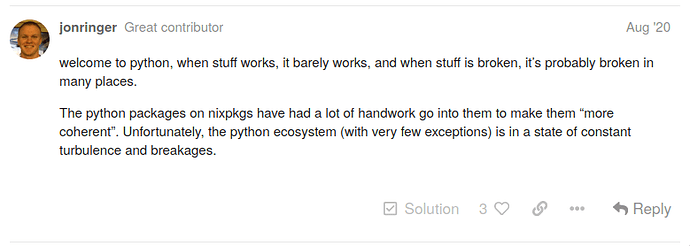python development in nixos could have a great impact in areas like data science
- but NOT if python in it’s core is lying/is a bug - which is the status quo
How would you automate pypi and/or conda-forge package conversion to nixpkgs if your python interpreter [as a silm version] gives wrong results regarding builtin installed modules/packages?
Take a look around:
- look what @jonringer says about developing python on nixos
- look how people try to make use out of python on nixos
How do you think python on nixos should develop strategically?
